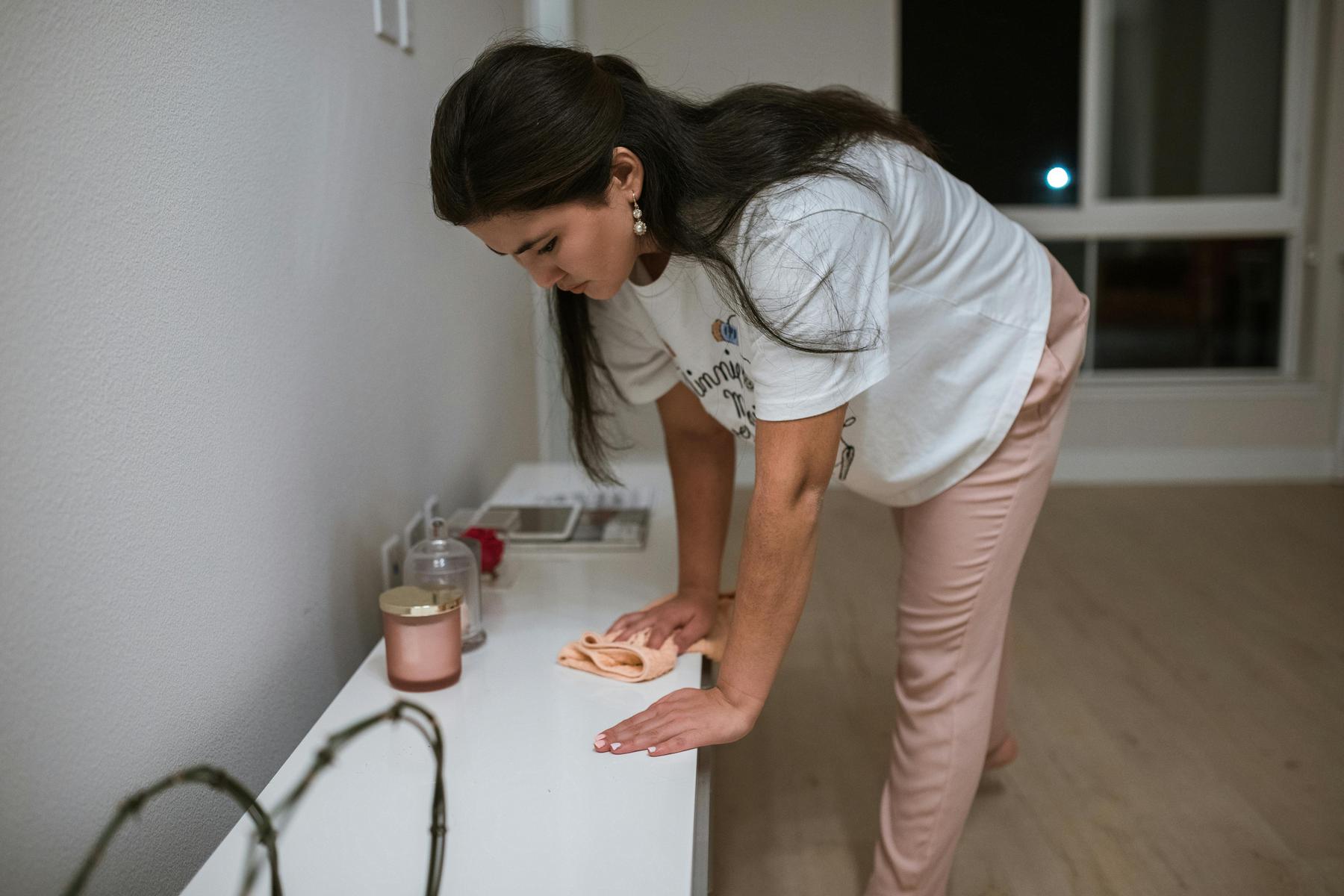The constant pressure to please everyone around you might be slowly destroying your health. Whether it’s family members who dismiss your dietary choices, friends who guilt you into unhealthy social activities, or relatives who drain your emotional energy with endless demands, poor boundaries create a cascade of stress that impacts everything from your sleep quality to your weight management goals.
Recent Australian research reveals that individuals with clearly defined personal boundaries experience 34% lower cortisol levels compared to those without established limits. More concerning, the absence of healthy boundaries correlates with a 27% higher incidence of anxiety disorders and significantly reduced adherence to medical treatment plans. For the millions of Australians managing chronic health conditions or pursuing weight management goals, learning to set boundaries with friends and family isn’t just about relationships—it’s a critical component of comprehensive healthcare.
Setting boundaries with friends and family for better health requires understanding that these protective limits aren’t selfish barriers, but essential frameworks that enable you to maintain your physical wellbeing whilst preserving meaningful relationships. The evidence is clear: proper boundary-setting reduces stress-related health complications and creates the psychological safety necessary for sustainable lifestyle changes.
Why Are Boundaries Essential for Your Physical and Mental Health?
The physiological impact of boundary violations extends far beyond momentary discomfort. When family members or friends consistently transgress your personal limits, your body activates the hypothalamic-pituitary-adrenal (HPA) axis, triggering prolonged cortisol release. This chronic stress response directly contributes to weight gain, immune suppression, and cardiovascular strain—particularly problematic for individuals already managing metabolic health concerns.
Neurobiological research demonstrates that boundary violations activate the amygdala’s fight-or-flight response, whilst proper boundary maintenance enhances prefrontal cortex function, improving emotional regulation during challenging conversations. Australian longitudinal health data reveals striking correlations between strong familial boundaries and reduced health risks, including a 19% decreased risk of metabolic syndrome and 41% higher adherence to prescribed medical regimens.
The psychological benefits prove equally significant. Boundary-setting acts as a buffer against emotional labour and role confusion—two major predictors of chronic stress. When you establish clear limits around topics like diet discussions, medical decisions, or personal space, you create mental resources that can be redirected toward health-promoting behaviours rather than managing interpersonal conflicts.
For individuals pursuing weight management goals, boundaries become particularly crucial. The pressure to explain dietary choices, defend medical treatments, or participate in food-centric social activities can derail progress and create anxiety around health decisions. Research shows that patients who establish dietary conversation boundaries achieve 23% greater weight loss maintenance compared to those without such protections.
What Types of Boundaries Should You Set with Friends and Family?
Understanding the different categories of boundaries helps you identify specific areas where limits might benefit your health. Physical boundaries encompass personal space, privacy needs, and bodily autonomy. A 2024 Australian survey found that 68% of participants reported improved sleep quality after establishing bedroom privacy rules with cohabiting relatives, highlighting how spatial boundaries directly impact physical health.
Emotional boundaries regulate the sharing of personal experiences and vulnerability levels. The National Mental Health Survey revealed that 52% of Australians felt pressured to disclose traumatic experiences to family members, often exacerbating anxiety symptoms. Implementing “tiered disclosure” systems—where sensitive health information is only shared with trusted individuals—protects psychological wellbeing whilst maintaining family connections.
Informational boundaries prove essential for those managing health conditions. This includes limiting discussions about medical treatments, weight fluctuations, or dietary choices. Many patients find that requesting relatives avoid commenting on food selections or body size creates the psychological safety necessary for developing sustainable health habits.
| Boundary Type | Health Impact | Implementation Strategy | Australian Research Finding |
|---|---|---|---|
| Physical/Spatial | Improved sleep quality, reduced stress | Designated private spaces, negotiated shared area usage | 68% reported better sleep with bedroom privacy rules |
| Emotional | Lower anxiety, reduced emotional labour | Tiered disclosure systems, selective vulnerability | 52% felt pressured to over-disclose traumatic experiences |
| Informational | Better treatment adherence, reduced shame | Limited health discussions, protected medical privacy | 23% greater weight maintenance with dietary boundaries |
| Digital/Temporal | Enhanced mental health, better work-life balance | Device-free meals, email-free weekends | 89% of households own multiple smart devices requiring boundaries |
Digital and temporal boundaries have become increasingly important as 89% of Australian households own multiple smart devices. Establishing email-free weekends, using auto-replies to manage after-hours expectations, and creating device-free meal times prevent 24/7 accessibility from eroding mental health. Temporal boundaries—such as limiting family gathering durations or scheduling protected self-care blocks—reduce decision fatigue, a known barrier to healthy eating and exercise adherence.
How Can You Effectively Communicate Boundaries Without Damaging Relationships?
The ASSERT framework, adapted from dialectical behaviour therapy, provides a structured approach to boundary communication that maintains relationship harmony whilst protecting personal needs. This evidence-based protocol significantly enhances boundary-setting efficacy when applied consistently.
Begin by assessing your specific needs through journaling or therapy apps to identify particular stressors, such as unsolicited diet advice or pressure to attend unhealthy social gatherings. State your boundaries clearly using non-accusatory language: “I’ve decided to stop discussing calorie counts during meals” rather than “You always make inappropriate comments about food.”
Specify consequences calmly and consistently. Rather than making threats, outline your planned responses to violations: “If diet talk continues, I’ll need to leave the table.” This approach removes emotion whilst maintaining firmness. Empathise with others’ perspectives to reduce defensiveness: “I know you’re concerned about my health, but comments about my weight increase my stress levels.”
Reinforce positive responses by thanking those who respect your boundaries: “I really appreciate you changing the subject yesterday when I mentioned feeling uncomfortable.” This positive reinforcement encourages continued compliance whilst strengthening relationships.
Training consistency through role-playing scenarios—whether with health coaches, therapists, or trusted friends—builds response automaticity. When faced with resistance, techniques like fogging (agreeing with partial truths without conceding your position) and broken record repetition maintain your stance without escalation. For example, when a relative says “You’re being too sensitive about diet talk,” respond with “I understand you see it differently, but I need to prioritise my mental health right now.”
What Are the Most Common Challenges When Setting Boundaries?
Cultural and generational resistance often present the most significant obstacles to boundary implementation. A 2024 University of Melbourne study found that second-generation immigrants faced 73% higher boundary pushback when prioritising self-care over familial obligations. Collectivist family structures frequently perceive boundaries as rejection or disrespect, requiring culturally sensitive approaches.
Framing boundaries as “honouring personal health to better serve the family” rather than individual preference improves acceptance rates by 58%. This reframing acknowledges family values whilst protecting personal needs, creating a bridge between individual health goals and collective family wellbeing.
Emotional blackmail and guilt trips represent another common challenge. Phrases like “After all I’ve done for you…” weaponise obligation to bypass established boundaries. Effective counterstrategies include neutral reflection (“I hear you’re upset, but my decision stands”) and compartmentalisation (scheduling limited interactions post-violation until trust rebuilds).
Self-sabotage and internalised guilt often undermine boundary consistency. Internal narratives such as “I’m selfish for saying no” create psychological barriers to self-advocacy. Cognitive restructuring techniques replace these limiting beliefs with affirmations: “Protecting my energy allows me to show up fully for others.” Mindfulness practices teaching RAIN (Recognise, Allow, Investigate, Nurture) techniques reduce guilt-driven compliance by 41%.
Professional mediation through family therapy, particularly via bulk-billed telehealth sessions, can resolve entrenched conflicts whilst providing neutral ground for boundary negotiation. These services prove particularly valuable when boundary violations become chronic or escalate to emotional abuse.
How Does Technology Support Boundary-Setting in Modern Relationships?
Australia’s telehealth reforms have democratised access to boundary coaching, particularly benefiting rural populations who previously lacked mental health resources. Modern healthcare platforms integrate boundary-setting modules featuring pre-written message templates for difficult conversations, AI role-playing chatbots for practice scenarios, and shared family calendars with protected self-care blocks.
Virtual care models enhance boundary literacy through GP-briefed scripts, where doctors provide medically grounded boundary justifications. For example, “My care team has advised limiting diet discussions as they interfere with my treatment progress.” This medical framework often reduces family resistance whilst validating the patient’s boundary needs.
Shared care plans enable families to review treatment rationales via encrypted portals, creating transparency around health decisions whilst maintaining appropriate boundaries. This approach proves particularly effective for weight management patients whose families may not understand the complexity of medical interventions.
The 2023 AHPRA Telehealth Guidelines mandate practitioners to assess boundary needs during intake consultations, document agreed-upon family interaction protocols, and provide crisis support for severe boundary violations. These regulatory safeguards ensure boundary-setting becomes a reimbursable component of chronic disease management plans, increasing accessibility across socioeconomic groups.
Machine learning algorithms now analyse communication patterns from secure messaging platforms to flag passive-aggressive language indicative of impending boundary violations, suggest optimal timing for boundary conversations based on circadian stress rhythms, and predict relatives’ compliance likelihood using historical interaction data. Early trials show these personalised tools reduce boundary-related anxiety by 62% in weight management patients.
Building Sustainable Health Through Protective Boundaries
Setting boundaries with friends and family for better health represents a fundamental shift from reactive people-pleasing to proactive self-care. The evidence overwhelmingly demonstrates that individuals with clear personal limits experience measurably better physical and mental health outcomes, from reduced cortisol levels to improved treatment adherence.
The integration of boundary-setting into modern healthcare—particularly through telehealth platforms—signals recognition that relationship dynamics significantly impact medical outcomes. For Australians managing chronic health conditions or pursuing weight management goals, boundaries provide the structural integrity necessary for sustainable progress.
Success requires understanding that boundaries aren’t walls designed to exclude others, but bridges that enable healthier connection whilst protecting individual wellbeing. As Australia’s healthcare system continues evolving toward prevention-focused models, boundary literacy will prove increasingly critical to reducing stress-related morbidity and supporting long-term health goals.
The strategies outlined provide practical frameworks for transforming relational patterns, creating ecosystems where personal health and familial harmony mutually reinforce rather than compete. This balanced approach ensures that protecting your health strengthens rather than strains meaningful relationships.
How do I set boundaries without seeming selfish or hurting family relationships?
Frame boundaries as health necessities rather than preferences. Use medical backing when available (“My healthcare team recommends limiting stress-inducing conversations”) and emphasise how better self-care enables you to be more present for loved ones. Research shows that 58% fewer conflicts occur when boundaries are presented as family-benefiting rather than individual choices.
What should I do when family members consistently ignore my established boundaries?
Implement consistent consequences as outlined in the ASSERT framework. This might include limiting interaction time, leaving situations when boundaries are violated, or temporarily reducing contact until respect improves. Document violations to identify patterns and consider professional mediation through family therapy if resistance continues.
Are there specific boundaries that work best for weight management goals?
Effective weight management boundaries include limiting diet-related discussions, requesting no comments on food choices or body size, declining participation in diet culture conversations, and protecting medical privacy around treatments. Patients who establish these specific boundaries show 23% better weight maintenance compared to those without such protections.
How can I use technology to maintain boundaries with family and friends?
Utilise auto-reply messages, schedule communication windows, create device-free family time, and use boundary-setting apps that provide conversation templates. Many telehealth platforms now offer boundary coaching modules with role-playing tools and family communication resources accessible Australia-wide.
When should I seek professional help for boundary-setting difficulties?
Consider professional support when boundary violations escalate to emotional manipulation, when family conflicts interfere with medical treatment adherence, or when guilt and anxiety prevent you from maintaining necessary limits. Australian telehealth services provide accessible boundary coaching and family therapy options covered under Medicare.



